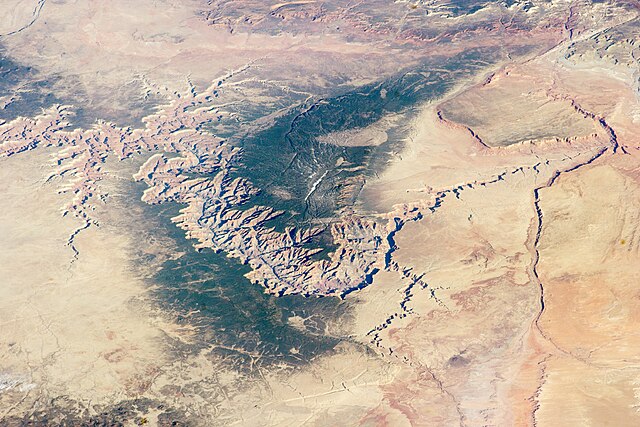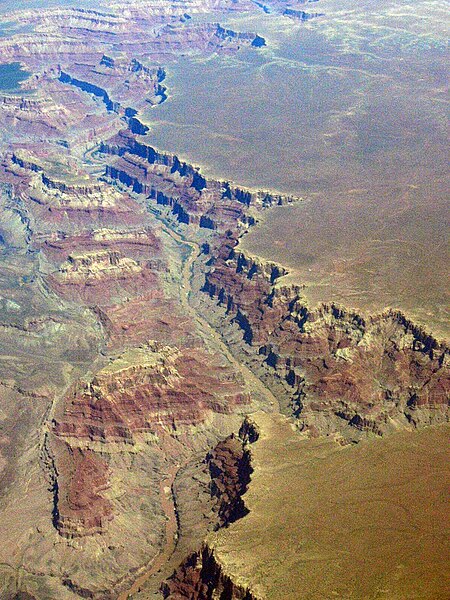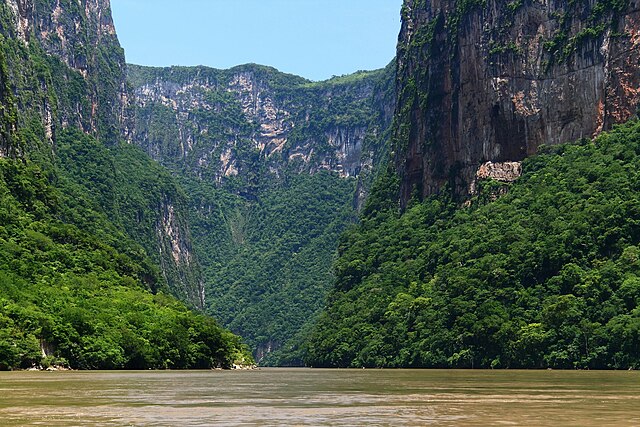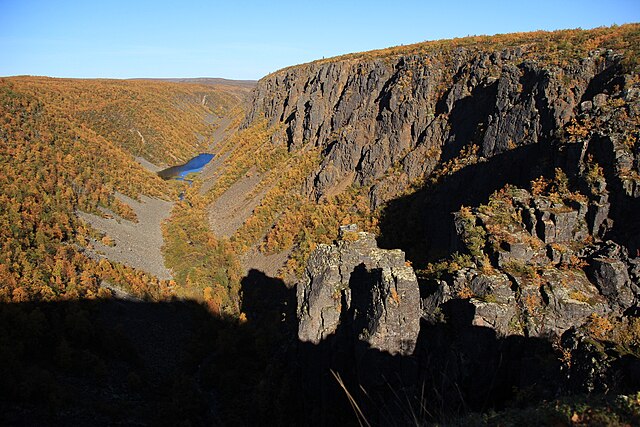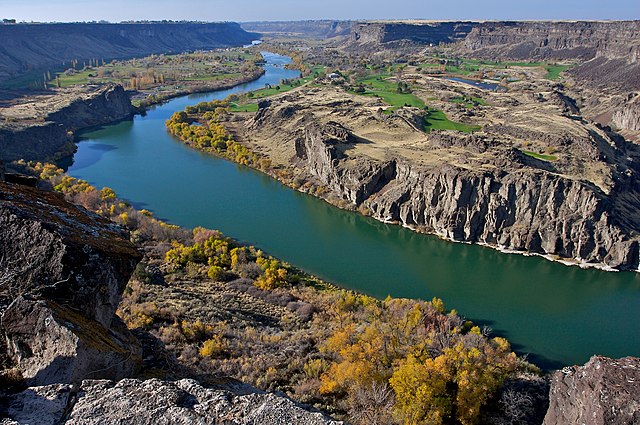The Grand Canyon is a steep-sided canyon carved by the Colorado River in Arizona, United States. The Grand Canyon is 277 miles (446 km) long, up to 18 miles (29 km) wide and attains a depth of over a mile.
The Colorado River flowing through the Grand Canyon in Arizona
Image of the Grand Canyon and surrounding area taken from the International Space Station
The Grand Canyon from an airplane, with the Colorado River visible
Rockfalls in recent times, along with other mass wasting, have further widened the canyon
A canyon, gorge or chasm, is a deep cleft between escarpments or cliffs resulting from weathering and the erosive activity of a river over geologic time scales. Rivers have a natural tendency to cut through underlying surfaces, eventually wearing away rock layers as sediments are removed downstream. A river bed will gradually reach a baseline elevation, which is the same elevation as the body of water into which the river drains. The processes of weathering and erosion will form canyons when the river's headwaters and estuary are at significantly different elevations, particularly through regions where softer rock layers are intermingled with harder layers more resistant to weathering.
The Grand Canyon, Arizona, at the confluence of the Colorado River and Little Colorado River.
Sumidero Canyon, Mexico
Kevo Canyon in Utsjoki, Finland
Snake River Canyon, Idaho


